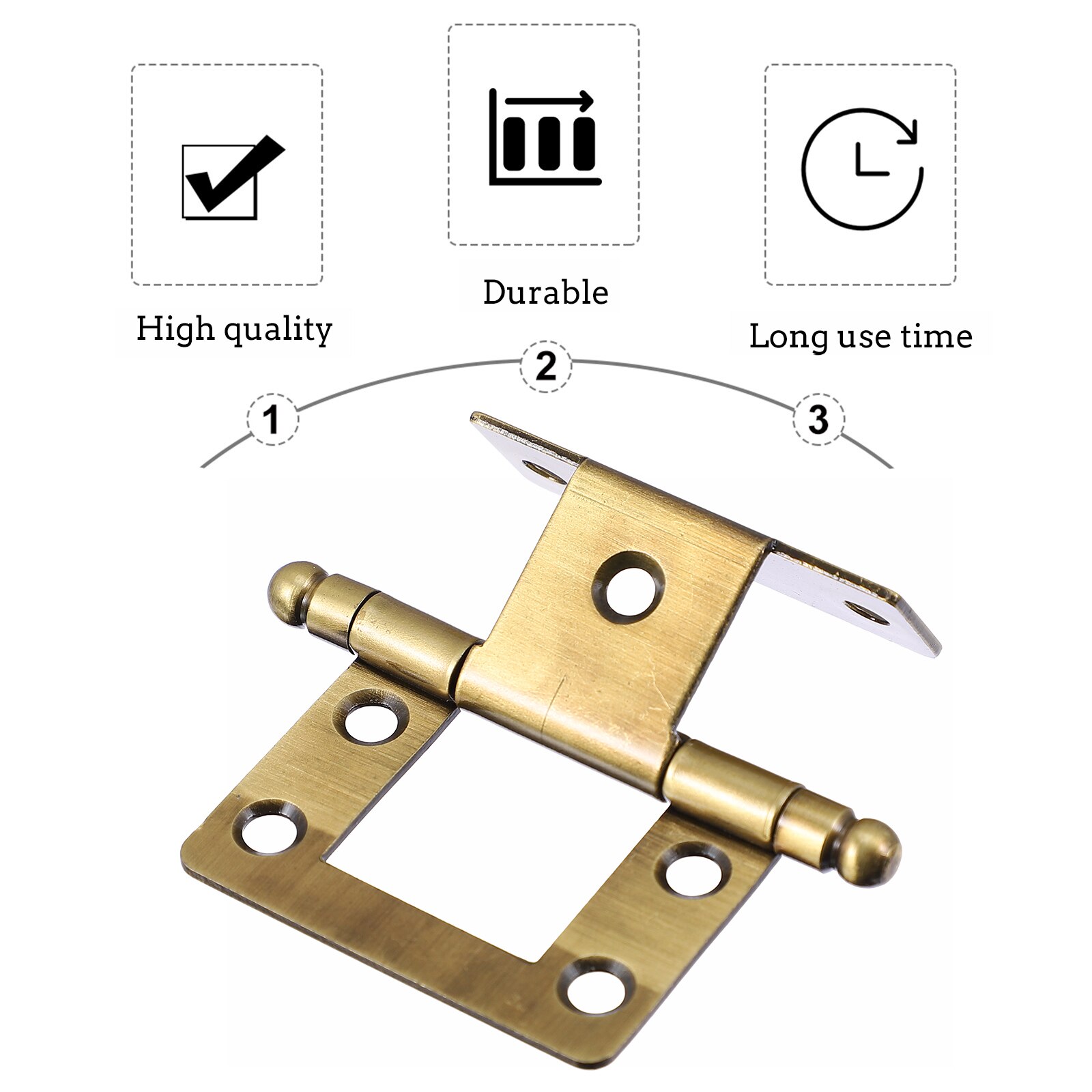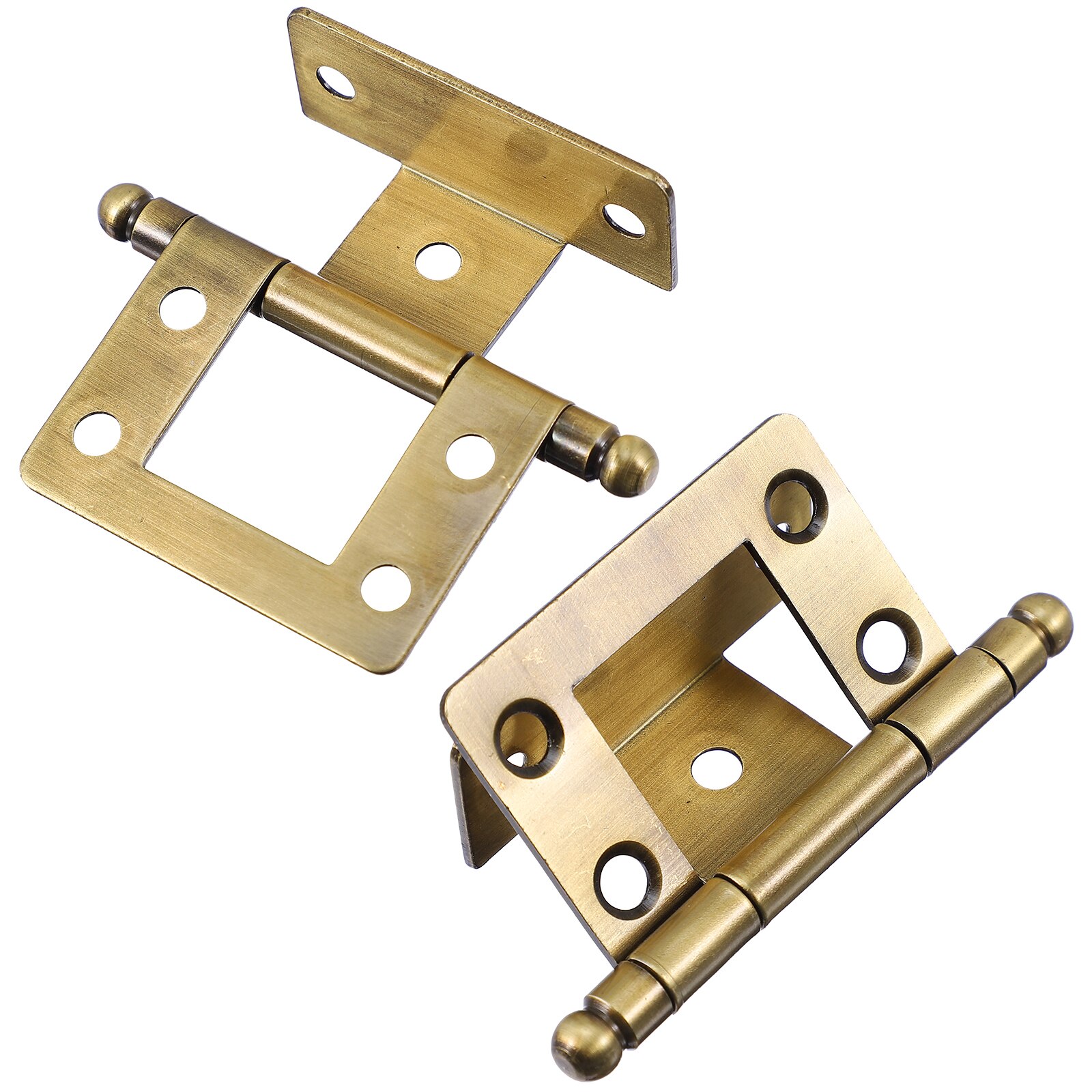Types of Iron Hinges for Cabinet Doors

Choosing the right hinges for your cabinet doors in your South Jakarta pad is crucial, not just for functionality but also for that *aesthetic*. We’re talking about elevating your kitchen game, peeps! Iron hinges offer both durability and a certain industrial-chic vibe that’s totally on-trend right now. Let’s dive into the different types and styles.
Butt Hinges, Iron hinges for cabinet doors
Butt hinges are the workhorses of the hinge world. They’re the classic, simple, and super-reliable option you see everywhere. These hinges are mounted flush with the door and the cabinet frame, creating a clean, unobtrusive look. You’ll find them in cast iron, wrought iron, and steel variations, each offering a different level of durability and aesthetic. Cast iron butt hinges, for instance, boast a rustic charm and impressive weight capacity, perfect for heavier cabinet doors. Steel butt hinges are more modern, offering a sleek look and good strength for everyday use. Wrought iron butt hinges, with their intricate detailing, lend a more antique or handcrafted feel, ideal for a vintage or farmhouse-style kitchen.
Strap Hinges
If you’re aiming for a more rustic or industrial look, strap hinges are your go-to. These hinges have a decorative strap that extends beyond the hinge itself, adding a visual element to your cabinet doors. Strap hinges are commonly made from wrought iron or steel, and they offer a strong, reliable connection, especially suitable for heavier doors or those needing a touch of vintage flair. The exposed strap adds a distinctive architectural detail, making them a statement piece in your kitchen design. Think of them as the cool, edgy cousins of the butt hinge.
T-Hinges
T-hinges, also known as “lift-off” hinges, are known for their easy removal feature. One leaf of the hinge is shaped like a “T,” making it simple to detach the door from the cabinet. This is super handy for cleaning or repainting. While not as common as butt hinges, T-hinges are a practical choice for situations where frequent door removal is necessary. They’re usually made from steel, offering a balance between functionality and durability.
Comparison Table of Iron Hinges
The choice of hinge depends largely on your style preferences and the weight of your cabinet doors. Here’s a quick comparison:
| Material | Style | Weight Capacity (approx.) | Typical Application |
|---|---|---|---|
| Cast Iron | Butt Hinge | High (e.g., 50-100 lbs) | Heavy cabinet doors, antique-style cabinets |
| Wrought Iron | Strap Hinge | Medium (e.g., 25-50 lbs) | Cabinet doors with a rustic or vintage look |
| Steel | Butt Hinge | Medium (e.g., 20-40 lbs) | Modern cabinets, everyday use |
| Steel | T-Hinge | Medium (e.g., 15-30 lbs) | Cabinets requiring frequent door removal |
Installation and Maintenance of Iron Hinges: Iron Hinges For Cabinet Doors
Okay, so you’ve got your fancy iron hinges – looking super chic for your South Jakarta pad, right? Now let’s get them installed and keep them looking their best for years to come. This isn’t rocket science, but a little know-how goes a long way.
Iron hinges for cabinet doors – Proper installation ensures your cabinet doors hang perfectly and the hinges last. Neglecting maintenance, however, can lead to rust and ultimately, a less-than-stylish situation. So let’s dive in!
Installing Iron Hinges: A Step-by-Step Guide
Before you start, gather your tools: a measuring tape, pencil, screwdriver (Phillips and flathead), drill (with appropriate drill bits), level, and possibly a wood chisel (depending on the door and hinge type). You might also want some wood filler and sandpaper for touch-ups.
- Measure and Mark: Carefully measure and mark the hinge placement on both the door and the cabinet frame. Ensure consistent spacing between hinges for a balanced look and proper door function. For heavier doors, you might need more hinges for extra support.
- Pre-Drilling (if necessary): For harder woods, pre-drilling pilot holes will prevent wood splitting. Use a drill bit slightly smaller than the hinge screw diameter. This step is crucial to avoid damaging your beautiful cabinet.
- Attach the Hinge to the Door: Align the hinge leaf with your markings and secure it to the door using the provided screws. Use a level to ensure the hinge is perfectly vertical. This ensures the door will hang straight.
- Attach the Hinge to the Cabinet Frame: Repeat the process on the cabinet frame, ensuring the hinge leaves align perfectly when the door is closed. A slight gap is usually acceptable, but avoid excessive gaps.
- Install Remaining Hinges: Repeat steps 3 and 4 for all remaining hinges. Ensure consistent spacing and alignment for smooth door operation.
- Adjust and Test: Once all hinges are installed, carefully close and open the door to check for smooth operation and alignment. Minor adjustments might be needed to achieve the perfect fit. Use a screwdriver to gently tighten or loosen screws as needed.
Troubleshooting Common Installation Problems
Sometimes, things don’t go exactly as planned. Here are some common issues and their solutions.
- Door doesn’t close flush: This could be due to uneven hinge placement or inaccurate measurements. Recheck your measurements and adjust hinge placement as needed.
- Door binds or sticks: This often results from uneven surfaces or incorrectly aligned hinges. Check for any obstructions and use a plane or sandpaper to smooth any rough surfaces. You might need to adjust the hinge screws slightly.
- Screws are stripping: Pre-drilling pilot holes is key to prevent this. If it happens, use slightly larger screws or wood filler to reinforce the holes.
- Hinges don’t fit: Ensure you’ve selected the correct hinge type for your door and cabinet thickness. Sometimes, you might need to use a chisel to create a mortise for the hinge if required by the hinge design.
Maintaining Iron Hinges: Preventing Rust and Ensuring Longevity
Keeping your iron hinges in top condition involves regular cleaning and lubrication. This prevents rust and ensures smooth operation for years to come. Think of it as a little pampering for your stylish hardware.
- Regular Cleaning: Wipe down your hinges regularly with a damp cloth to remove dust and grime. For stubborn dirt, use a mild soap solution. Avoid harsh chemicals that can damage the finish.
- Lubrication: Apply a light coat of lubricating oil (like WD-40 or a specialized hinge lubricant) to the hinge joints periodically. This reduces friction and prevents squeaking and wear. This simple step will keep your hinges running smoothly for a long time.
- Rust Prevention: For extra protection, consider applying a thin layer of clear coat or wax to the hinges to create a protective barrier against moisture. This is particularly helpful in humid climates.
Iron Hinges in Different Design Styles

Choosing the right iron hinge can seriously elevate your cabinet game, transforming a simple storage solution into a statement piece. The style of the hinge, its finish, and even its size can dramatically impact the overall aesthetic of your space, reflecting your personal taste and creating a cohesive design. Let’s explore how different hinge styles can contribute to various interior design trends.
Iron Hinges and Design Aesthetics
The beauty of iron hinges lies in their versatility. They seamlessly integrate into a multitude of design styles, adding a touch of character and durability. From rustic charm to sleek modern minimalism, the right iron hinge can perfectly complement your chosen aesthetic. Consider the material and color of your cabinets when selecting your hinges; a subtle contrast or a bold statement, the choice is yours.
Examples of Iron Hinges in Different Interior Design Styles
Let’s delve into specific examples. For a rustic farmhouse look, imagine chunky, black wrought iron hinges with a slightly distressed finish. These hinges would look fantastic on solid wood cabinets painted a creamy white or a soft sage green. The contrast between the dark metal and the light wood creates a visually appealing balance. For an industrial aesthetic, sleek, minimalist black iron hinges with a matte finish would complement metal cabinets or those made of reclaimed wood. The clean lines of the hinges would enhance the raw, functional feel of the industrial style. Finally, for a modern aesthetic, consider brushed nickel or oil-rubbed bronze iron hinges with clean, simple lines. These would work beautifully on sleek, minimalist cabinets in neutral colors like gray or white. The subtle sheen of the metal would add a touch of sophistication without overpowering the overall design.
Cabinet Door Designs Featuring Iron Hinges
Imagine a set of kitchen cabinets crafted from reclaimed pine, painted a warm, honeyed tone. The doors are simple shaker style, and each is adorned with substantial, black wrought iron hinges, their slightly uneven surfaces hinting at their handcrafted origins. The overall effect is one of rustic charm, perfectly complementing a farmhouse-style kitchen.
Next, picture a pair of bathroom cabinets constructed from polished concrete, their cool gray surface reflecting light. The doors are frameless, their clean lines emphasized by slender, brushed nickel iron hinges. The hinges are almost invisible against the concrete, yet their subtle presence adds a touch of modern elegance.
Finally, visualize a set of industrial-style shelving units built from dark, stained metal. The doors, simple rectangles of corrugated metal, are secured with robust, matte black iron hinges, their strong, functional design echoing the overall aesthetic. The hinges are a key element, reinforcing the industrial feel of the piece.
